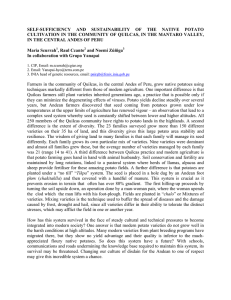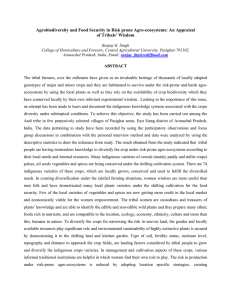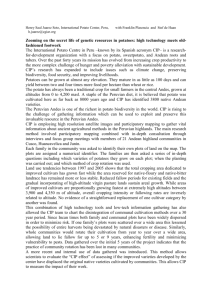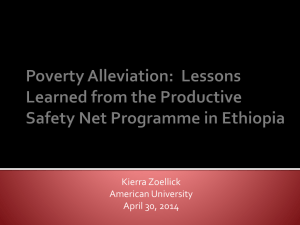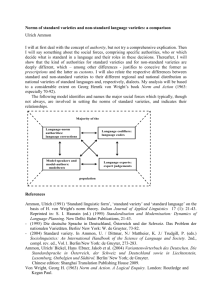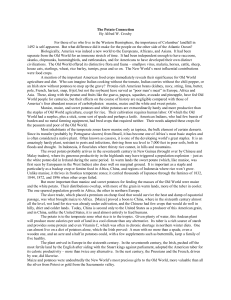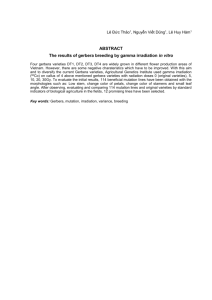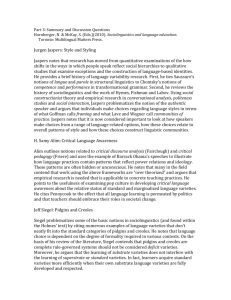Food for the Hungry, Ethiopia 2005-8, Title II MYAP
advertisement
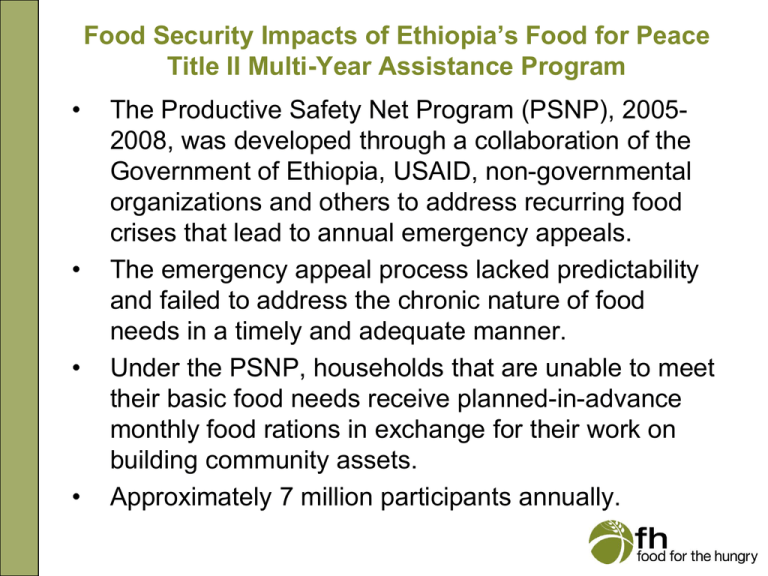
Food Security Impacts of Ethiopia’s Food for Peace Title II Multi-Year Assistance Program • • • • The Productive Safety Net Program (PSNP), 20052008, was developed through a collaboration of the Government of Ethiopia, USAID, non-governmental organizations and others to address recurring food crises that lead to annual emergency appeals. The emergency appeal process lacked predictability and failed to address the chronic nature of food needs in a timely and adequate manner. Under the PSNP, households that are unable to meet their basic food needs receive planned-in-advance monthly food rations in exchange for their work on building community assets. Approximately 7 million participants annually. Program Objectives The program was implemented by a group of private voluntary organizations: CARE, Catholic Relief Services, Food for the Hungry, Relief Society of Tigray, and Save the Children Program Objectives: • To meet food needs of the chronically food insecure while evening out household food consumption so households have adequate food year round. • To protect household assets (such as tools, cookware) by reducing or preventing the sale of those assets in food deficient periods. • To improve community food security through the construction of community assets, such as water catchments, terracing to preserve soil and market roads. • The long term goal is the graduation of participating households after they have become self reliant, e.g. able to produce and/or buy enough foods to meet their dietary needs. Public Works - building community assets Soil Conservation and Reforestation Wheat - from the American People Vegetable Oil USAID Partners’ Program Innovations • Promoting health and nutrition through mothers groups. • The introduction of high value crops and income generating activities to vulnerable households, including beekeeping, apples, peppers, and beans. • Training and services to help households increase production and sales by using improved varieties of crops, including a new variety of potato with high-yields. An Example – Improved Potato Production Potato is a major staple crops of N. Ethiopia. It has a very high yield compared to the cereals and is traditionally grown in the area. Potatoes require less time to develop than grain crops and can still be productive if the rainy season is short. An Example – Improved Potato Production • The Ministry of Agriculture had developed improved varieties of potatoes but they were not reaching farmers or being disseminated from the research stations. • These varieties are resistant to disease and yield 2 to 3 times more than traditional varieties. • FH coordinated with the research centers to get these new varieties introduced to farmers. Results • • • The improved varieties are producing 2 to 3 times the traditional varieties. Average profits per household are up to $300 from a single potato plot. Improved, high yielding potatoes are being made available throughout the area. Overall Positive Results • Dietary diversity (a measure of the different types of foods consumed in the household) score increased from 3.3 to 5.0 - about a 50% increase. They now produce and buy a greater variety of foods and have a more nutritious diet. • Average household asset values increased from $342 to $413 – approximately a 20% increase, • Estimated months of food self-sufficiency increased from 5.9 to 7.6 – a 29% increase.
